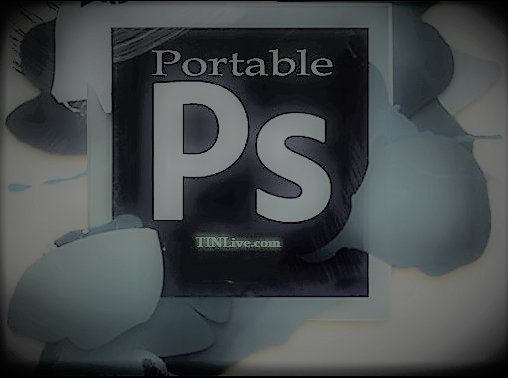-
Event date & time:
16.10.2018 at 00:00
-
Location
United States

From the Clone Supply panel (Window>Clone Source)I changed scale and rotation since I functioned, which awakened any routines. For exceptionally textured areas where management of darkness is robust to differentiate, this works exceptionally well.
It required a couple of moves, always sampling new locations and painting just tiny bits at one time. However, the outcome would be well worth the time and effort to steer clear of patterns.
After that is completed, finish the model mask at the top coating and then incorporate the first shadow, then as the initial was covered up whenever you shut the bottom. The shadow is merely a new coating placed to Multiplypainted using a gentle, low-flow dark brush. Nothing elaborate, and, I am only eyeballing the positioning.
Measure Tonight: Mask outside the Foreground from the Sky Layer
The very previous big part to focus with may be the skies. The initial skies in the bottom image had a delightful feeling on both sides, however, perhaps maybe not much detail everywhere. Something I enjoyed was the sporty, directional appearance, on the other hand, therefore let us replicate this inside our new skies.
From the Layers panel, Option-click (PC: Alt-click) at which the attention icon was for the Sky coating to change it on and also to switch off most of the other layers at the same period, then click onto it to ensure it is busier. Now, hold the Shift key and then click-and-drag up an incredibly short space only underneath the mountain to draw professional photo retouching gimp on a gradient that'll hide the foreground. That is a destructive movement. However, there are just two great causes of this (1) The Route Blur tool (see alternative ) could be quite described as considered a modest intensive on the card, therefore giving it to make use of is much more potent if you can; and (two ), once you do work with of a blur, most of the nearby pixels could possibly get mixed into. Considering there were parts onto the horizon I did not need to be combined with the skies, and I made them out so they mightn't contaminate the borders once I added altogether together.
(Notice: you would like to show off other coating elements therefore that you aren't getting confused with the other activities going on, as when you input the Blur Gallery, then you will notice precisely what's now visible on the picture. However, merely the active coating receives the consequence. It could be hard pressed to find that some things do not respond to some changes)
Measure Headline: Blur the Sky
I have included two blur avenues. The very best is curved, also put to a speed of roughly 80 percent at the Blur Tools panel. The ending contours have been selected, and that I rounded them (switch Edit Blur Shapes from the Blur Tools panel to observe the end contours ). Employing end contours this manner permits more feel and elegance; otherwise, blurs can wind up appearing as though you ran a spoonful over them. Even a modest additional texture from the silhouette might well not be wholly natural, but it looks more interesting!
To prevent the horizon out of being fuzzy, the 2nd path is just a direct line with the end-point Rate set to 0 px at either end of the lineup. This little hint is crucial to understand; each Blur Trail can get its speed surroundings, which is what makes this tool its incredible power.
Putting the Sky copy layer between the floor and the components layer (and spinning down the layers back ) enables me to benefit from the American town's cut-out, also hides the first backdrop, including a few elements which may stand out across the edges and rooftops. For more contrast from the skies coating, I trimmed a Curves adjustment layer for it lowered the shadows somewhat.
Measure 1: Merge, Please!
The finishing touches listed here are pretty straightforward but add some pizazz. I desired a tintype texture, without sacrificing each the color.
Vignettes help draw the attention into the guts of the image when offering a few thicknesses. I have put the blend mode of the Gradient match to multiply and lower the Opacity to 6-8 %.
Ultimately, it's time to the feel! I used a blend of several quite grungy rust along with also some old parchment newspaper, either by Adobe Stock. The rust coating was medicated using a trimmed Black & White modification and a few Curves to smooth out it, then place to Overlay blend mode and 41 percent Opacity. At the peak of this is the newspaper feel place additionally to Overlay, using 36 percent Opacity. The cause of this would be to keep up the association between the feel elements, to possess them both to be increased or lowered by the same level as the band Opacity.
One thing I like about creating composite images is they exercise not precisely whatever you found out about pictures and employed in Photoshop. You want to comprehend composition and everything things to search for in a spectacle. Additionally, you require some technical abilities to categorize the many different images, start looking for essential elements that are common, and also identify what has to be changed. In Photoshop, you are going to find a close work out with plenty of tools and techniques all mashed together in one endeavor.
There's no path to success, therefore expect your self and maintain your narrative at heart. Organization and also a little preparation may even help a good thing. What you are doing is acting your craft of visualization, so giving your view, deciding upon the emotion and story that you wish to share with which did not exist before you started Photoshop. Proceed tell your own story!
http://www.plimbi.com/article/172253/how-to-charge-for-photo-retouching